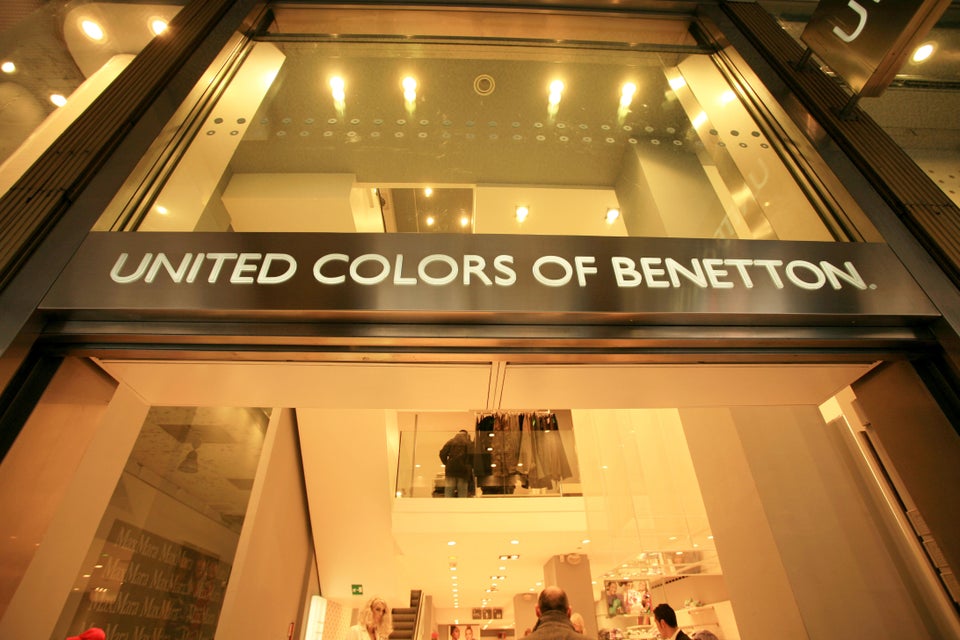
Six dollars. That’s how much more an American consumer would have to pay for the typical T-shirt made in the U.S. rather than in a potentially unsafe factory in a poor, faraway country.
So reckons Eric Henry, chief executive officer of a North Carolina-based apparel manufacturer called TS Designs, which markets its T-shirts as both environmentally sustainable and ethically produced -- two virtues sprung from the fact that it cannot compete on price while remaining in the U.S.
“We decided to stay here, and it has been a difficult path,” said Henry.
Henry has been in the apparel business for three decades, enough to see nearly all of his competitors disband or head overseas in search of workers who will do the job for lower wages. Henry has taken the opposite route, shrinking the geographic scope of his supply chain and making that a marketing feature.
His company makes its products “dirt to shirt” through a supply chain that spans only 600 miles and boasts complete transparency. Customers are invited to use a website to input a special code emblazoned on the back of every shirt. The site then serves up the name, photo and contact information for every person whose labors went into creating the product, from the farmer who grew the cotton to the workers who print and dye the shirts.
His “most sustainable” T-shirt, which uses certified organic cotton, a transparent supply chain, with a patented environmentally-friendly print and dye system, costs around $14 wholesale. The same type of shirt would cost about $8 to make overseas, he estimated. In short, the $6 gap.
The difference comes down to paychecks. Workers at TS Designs in North Carolina are paid an average of $15 an hour, Henry said. The average factory worker in Bangladesh makes $0.21 an hour, according to the Institute of Global Labor and Human Rights.
"Our T-shirts cost more because of where they're made and how they're made," said Henry, admitting that he can't compete on price alone.
In the wake of the worst garment industry accident in history -- the collapse of a factory in Bangladesh, which took the lives of more than 600 people -- attention is again focused on the full costs of churning out low-priced goods via a global supply chain. Consumers are absorbing another reminder that bargains on store shelves in Los Angeles and Philadelphia may come at the expense of people toiling in unsafe conditions in Dhaka and Guatemala City.
For Henry and like-minded entrepreneurs in the U.S. -- those seeking to buck the trends of global trade by manufacturing at home -- the hope is that this consumer awareness may expand their market niche.
Online apparel retailer American Giant, for instance, does not compete with the world’s largest apparel brands on price. A men’s T-shirt bearing its label runs $24.50 -- roughly four times more than its most inexpensive counterpart on the shelves at Walmart, Target or some other enormous retailer.
Ask the company’s chief executive, Bayard Winthrop, about disparity in price and he will tell you about the workmanship and quality of raw materials that goes into his T-shirts. But he will also tell you about geography: His shirts are made in America, and not on the other side of the world, in a poor country in which workers may be mistreated.
"I need to give that consumer an option for a product from a company that fits their system of beliefs," Winthrop said.
Winthrop’s emphasis on quality is both a virtue and a necessity. Even mighty Walmart, the world’s largest retailer, could satisfy the consumer craving for low prices if it made its wares exclusively in the United States, he said.
“Can Walmart make a $5 tee in the U.S.? Probably not,” Winthrop said. “But can they make a $9 tee that lasts longer and made in the U.S.? Yes they could.”
Using hypothetical figures, Winthrop explained that if a manufacturer makes a T-shirt for $6 in the U.S., $3 of that would be fabric and design, while the other $3 would be labor. If you take production overseas, the labor cost would be less than $1. The fabric and design cost doesn’t change much, he said, especially for a simple piece of apparel like a T-shirt.
So vast is the apparel and so large the companies involved that they have hop-scotched the globe in permanent pursuit of lower labor prices somewhere new. In the United States, some 97 percent of all apparel is now imported, according to the American Apparel and Footwear Association.
This pursuit of lower prices through globalization amounts to a “race to the bottom,” said Pietra Rivoli, a professor of finance and international business at Georgetown University, and author of the book The Travels of a T-Shirt in the Global Economy.
“This industry is so mobile that it gets fixed in one place and then pops up somewhere else,” Rivoli said.
But American apparel manufacturing may eventually see a resurgence, some experts said. The garment industry is undergoing the kind of technological change reshaping many industries: Machines are increasingly attending to tasks once performed by humans. That undercuts the overall cost advantages of going overseas in search of cheaper labor. As automation emerges as a greater force in the apparel trade, that could send investment back to the United States, where mastery of machinery remains a core strength.
“Technological progress has taken away the worst part of many jobs,” said Rivoli.
Right now, complicated tasks are still done by humans, such as the manual addition of buttons and zippers to clothing. But that is changing.
“It’s gradually mechanizing,” said Rivoli. “If you can get that to be 100 percent true and it’s machines that are producing our T-shirts, then companies aren’t going to be chasing around the world for those labor costs.”
